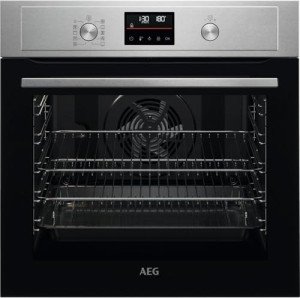The Comprehensive Guide to Self-Cleaning Oven Features
Self-cleaning ovens have reinvented the cooking experience, adding benefit and efficiency to keeping kitchen area devices. With the push of a button, house owners can enjoy a clean oven without the labor-intensive scrubbing and damaging chemicals frequently connected with conventional cleaning methods. This article digs into the myriad features of self-cleaning ovens, assisting consumers comprehend their benefits, operation, and maintenance.
What is a Self-Cleaning Oven?
A self-cleaning oven is an appliance that uses heats to incinerate food residues, discolorations, and spills. This feature streamlines cleaning by transforming particles into ash that can easily be cleaned away. Suggested Internet site -cleaning ovens use a choice of cleaning modes, enabling users to choose the method that best matches their requirements.
Types of Self-Cleaning Methods
Self-cleaning ovens normally use among three approaches: pyrolitic cleaning, steam cleaning, or catalytic cleaning. Each approach offers distinct benefits and features:
| Cleaning Method | Description | Benefits |
|---|---|---|
| Pyrolitic | This technique involves raising the oven temperature level to about 900 ° F( 482 ° C) to transform food residue to ash. | - Effective for difficult spots - Almost total removal of odors |
| Steam Cleaning | Integrates steam and heat to loosen up grime, making it easier to clean away. | - Lower temperature level decreases energy intake - Shorter cleaning cycle |
| Catalytic | Utilizes catalytic liners that absorb and break down food residue throughout baking. | - No additional cleaning cycle needed - More energy-efficient throughout routine use |
Key Features of Self-Cleaning Ovens
When selecting a self-cleaning oven, consumers ought to know several important features:
Cleaning Cycle Options:
- Heavy-duty cleaning for difficult stains.
- Light cleaning for minor spills.
- Quick-clean settings for routine maintenance.
Oven Lock:
- An integrated safety feature that locks the oven door during the cleaning process prevents unexpected opening.
Temperature level Control:
- Many ovens allow users to change temperature settings, which can be advantageous depending on the type of cleaning method selected.
Easy-to-Clean Racks:
- Removable racks created to withstand high temperatures, enabling more extensive cleaning.
Smart Technology Integration:
- Some modern-day self-cleaning ovens can be managed by means of smartphone apps, enabling users to begin or monitor cleaning cycles remotely.
Odor Control:
- Advanced models include features to minimize smells during the cleaning process.
Benefits of a Self-Cleaning Oven
Owning a self-cleaning oven includes various benefits that boost usability and general kitchen area health:
- Time-Saving: The self-cleaning function gets rid of the need for manual scrubbing, maximizing important time for other cooking jobs.
- Lowered Use of Chemicals: Self-cleaning ovens decrease the requirement for severe cleaning agents, promoting a safer cooking environment.
- Improved Hygiene: Regular cleaning reduces the opportunities of bacteria development from food residues, keeping a healthier cooking area.
- Ecological Sustainability: Modern models are created to be energy-efficient, helping to lower the carbon footprint related to cleaning.
How to Use a Self-Cleaning Oven
Operating a self-cleaning oven is fairly uncomplicated, however it is necessary to follow the producer's guidelines for ideal outcomes. The following actions detail the normal process:
Preparation:
- Remove oven racks and any loose debris.
- Clean down surface areas to remove excess food particles.
Selecting the Cleaning Cycle:
- Choose the desired cleaning mode based on the level of mess (heavy, light, or quick).
Initiating the Cleaning Cycle:
- Press the self-clean button and wait for the oven to lock its door immediately.
Post-Cleaning:
- Once the cycle is complete, await the oven to cool off before wiping away the ash with a wet cloth.
Frequently Asked Questions About Self-Cleaning Ovens
Q1: Are self-cleaning ovens safe to use?A1: Yes
, self-cleaning ovens are developed with safety features such as door locks and heat-resistant glass, making them safe for usage throughout the cleaning cycle.
Q2: How frequently should I use the self-cleaning feature?A2: It depends on how regularly you prepare. Usually, utilizing the self-cleaning function once every couple of months suffices, however heavier users may need more frequent cleaning. Q3: Can I leave cleaning products inside the oven during the self-clean cycle?A3: No, all products, such as pots and pans, ought to be removed before starting the self-cleaning cycle to prevent damage. Q4: Do self-cleaning ovens take in more energy than standard ovens?A4: While the cleaning cycle does need
heats, modern self-cleaning ovens are created to be energy-efficient. The energy intake can be equivalent and even less than standard cleaning methods when taking into account the time saved and chemicals prevented. Self-cleaning ovens represent a significant improvement in kitchen area technology, simplifying the often-dreaded job of oven maintenance. With numerous cleaning approaches
, hassle-free features, and substantial benefits, these ovens are a possession for any modern-day cooking area. As customers end up being significantly concentrated on efficiency and sustainability, accepting self-cleaning ovens may just be the right choice for households looking to streamline cooking while promoting cleanliness and hygiene. Stressing the value of acquainting oneself with the features and best practices associated with these ovens ensures that users can totally appreciate their benefits, resulting in a more enjoyable and problem-free cooking experience.

